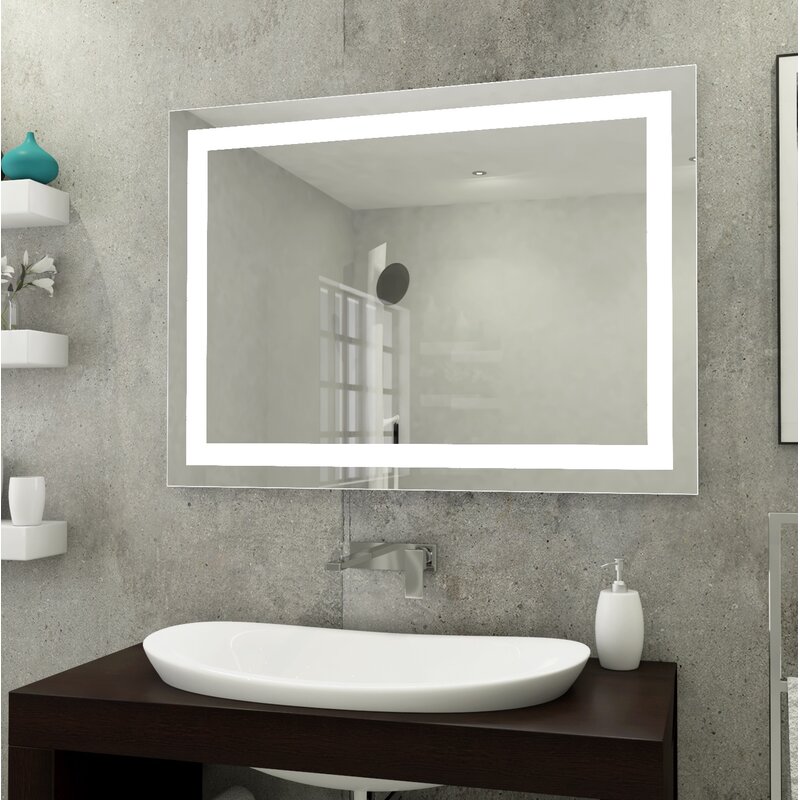To improve the energy efficiency of a lighted mirror, you can take several steps that reduce power consumption and promote eco-friendliness. Here are some ways to enhance the energy efficiency of your lighted mirror:
Choose LED Lighting: Opt for a lighted mirror with LED (Light Emitting Diode) lighting. LEDs are highly energy-efficient, consuming significantly less electricity than incandescent or fluorescent bulbs. They last longer and produce less heat, further reducing energy usage.
Use Energy-Efficient LED Bulbs: If you already own a lighted mirror with replaceable LED bulbs, ensure that you use energy-efficient LED bulbs when replacements are necessary. Look for bulbs with high lumens per watt (lm/W) ratings.
Adjust Brightness: Use the brightness controls on your mirror to set the light at an appropriate level for your specific needs. Higher brightness levels consume more energy, so reducing the brightness when it's not required can save power.
Turn Off the Mirror When Not in Use: Make a habit of turning off the lighted mirror when you're finished using it. Leaving it on unnecessarily consumes energy. If your mirror has a memory function, it may remember your last settings when you turn it back on.


Consider Motion Sensors: Some lighted mirrors come equipped with motion sensors that automatically turn the lights on when you approach and off when you move away. This can help reduce energy usage when you forget to switch off the lights manually.
Timer Function: If your mirror has a timer function, use it to set a specific time for the lights to turn off automatically. This can be helpful if you're concerned about leaving the lights on inadvertently.
Select a Mirror with a High Color Rendering Index (CRI): A higher CRI ensures that the mirror provides accurate and vibrant lighting for tasks like makeup application or grooming, allowing you to use less light to achieve the same results.
Regular Maintenance: Keep the mirror's surface and lighting components clean. Dust and smudges can reduce light output and make the mirror less efficient. Clean the mirror and LED bulbs as needed to maintain optimal performance.
Position the Mirror Thoughtfully: Position the mirror in a location that maximizes the use of natural light. This can reduce the need to rely solely on the mirror's lighting.
Install a Dimmer Switch: If your lighted mirror does not have built-in brightness controls, consider installing a dimmer switch in the room where the mirror is located. This allows you to adjust the lighting level as needed.
Invest in Smart Lighting: Some modern lighted mirrors offer smart lighting features. You can control these mirrors through a smartphone app, which may include energy-saving options like scheduling and remote control.
Energy-Efficient Design: When purchasing a new lighted mirror, look for models that are designed with energy efficiency in mind. This might include power-saving features and eco-friendly materials.
By implementing these energy-efficient practices, you can reduce the power consumption of your lighted mirror and contribute to both cost savings and environmental sustainability.

 English
English عربى
عربى Español
Español















.jpg?imageView2/2/format/jp2)
-1.jpg?imageView2/2/format/jp2)



